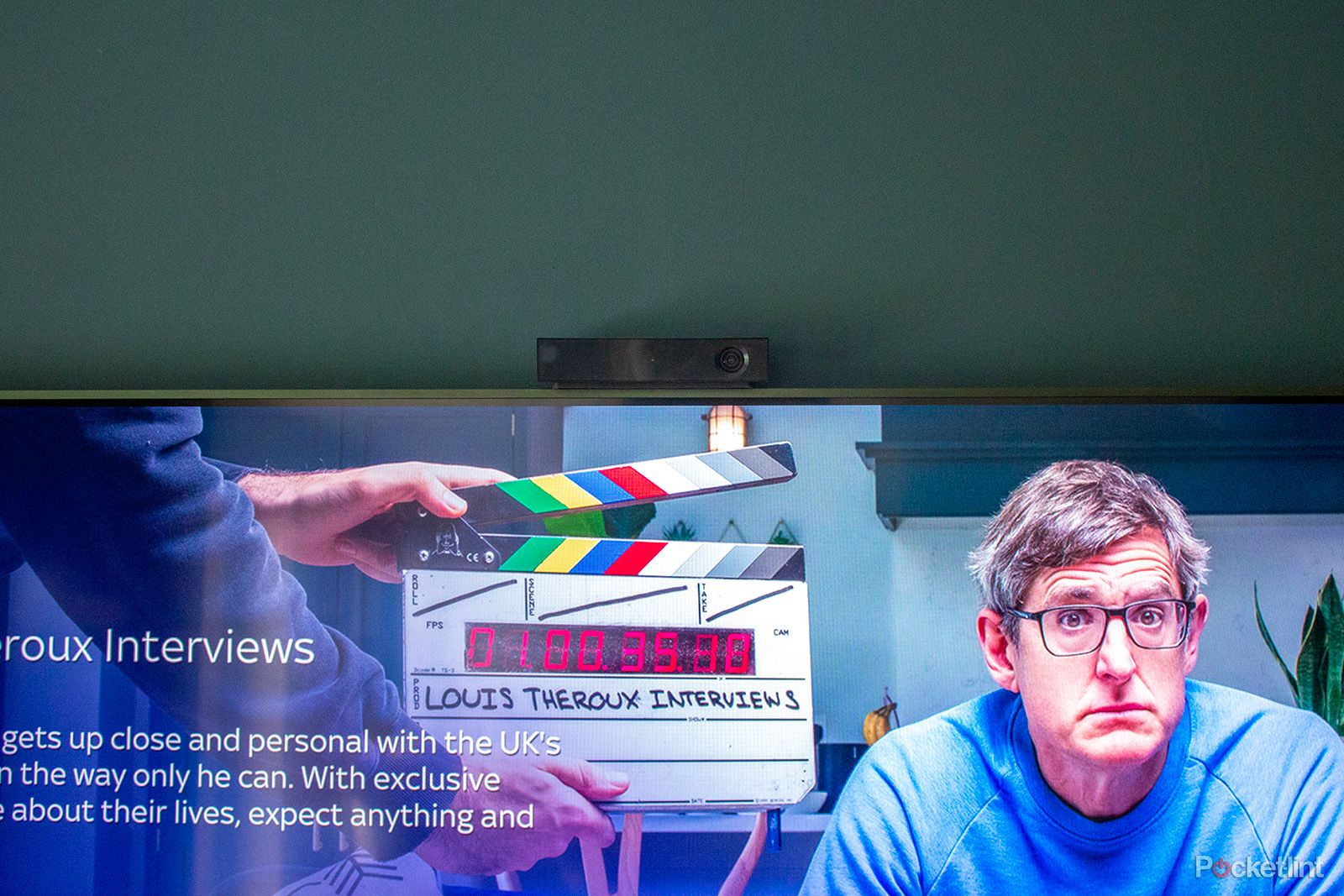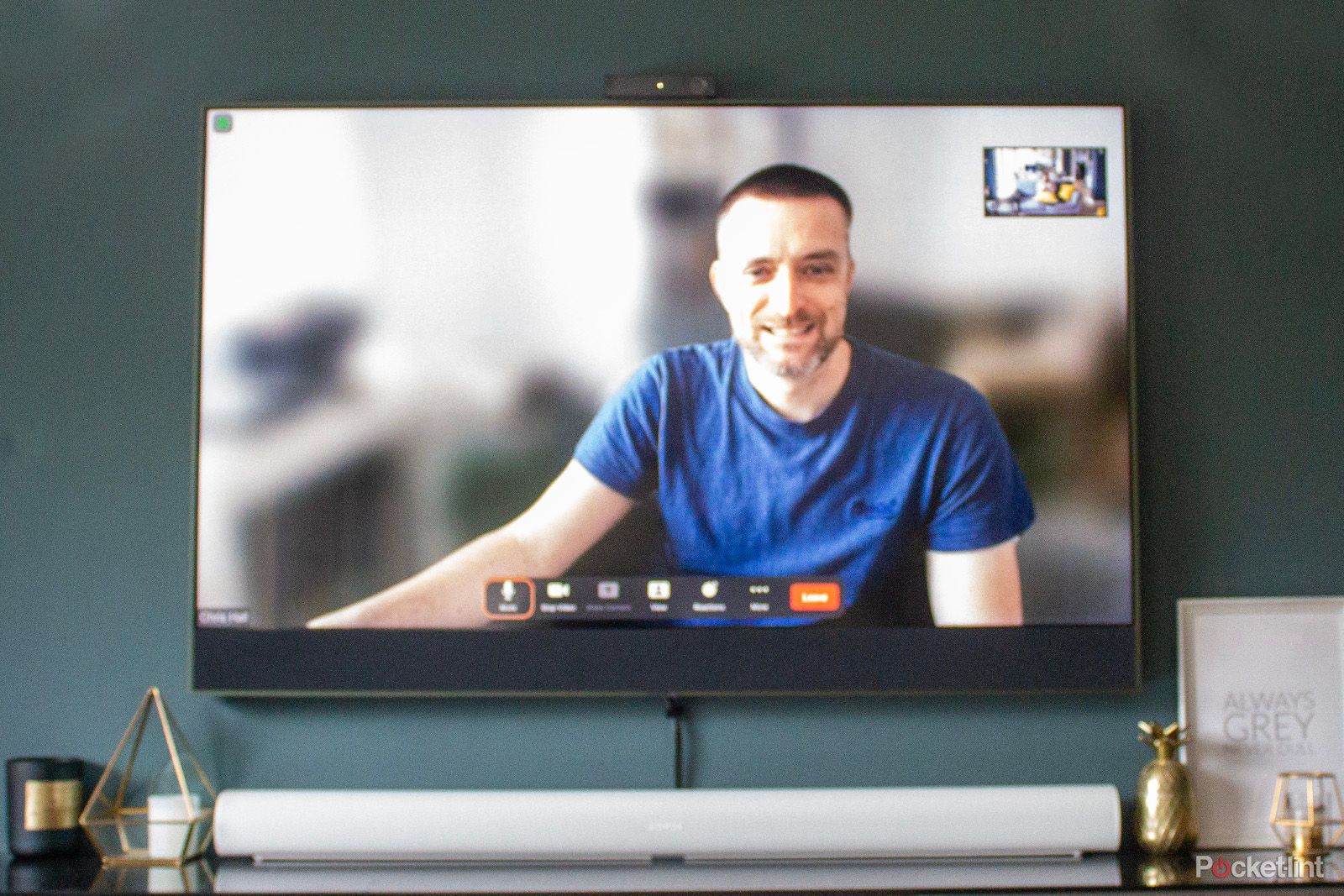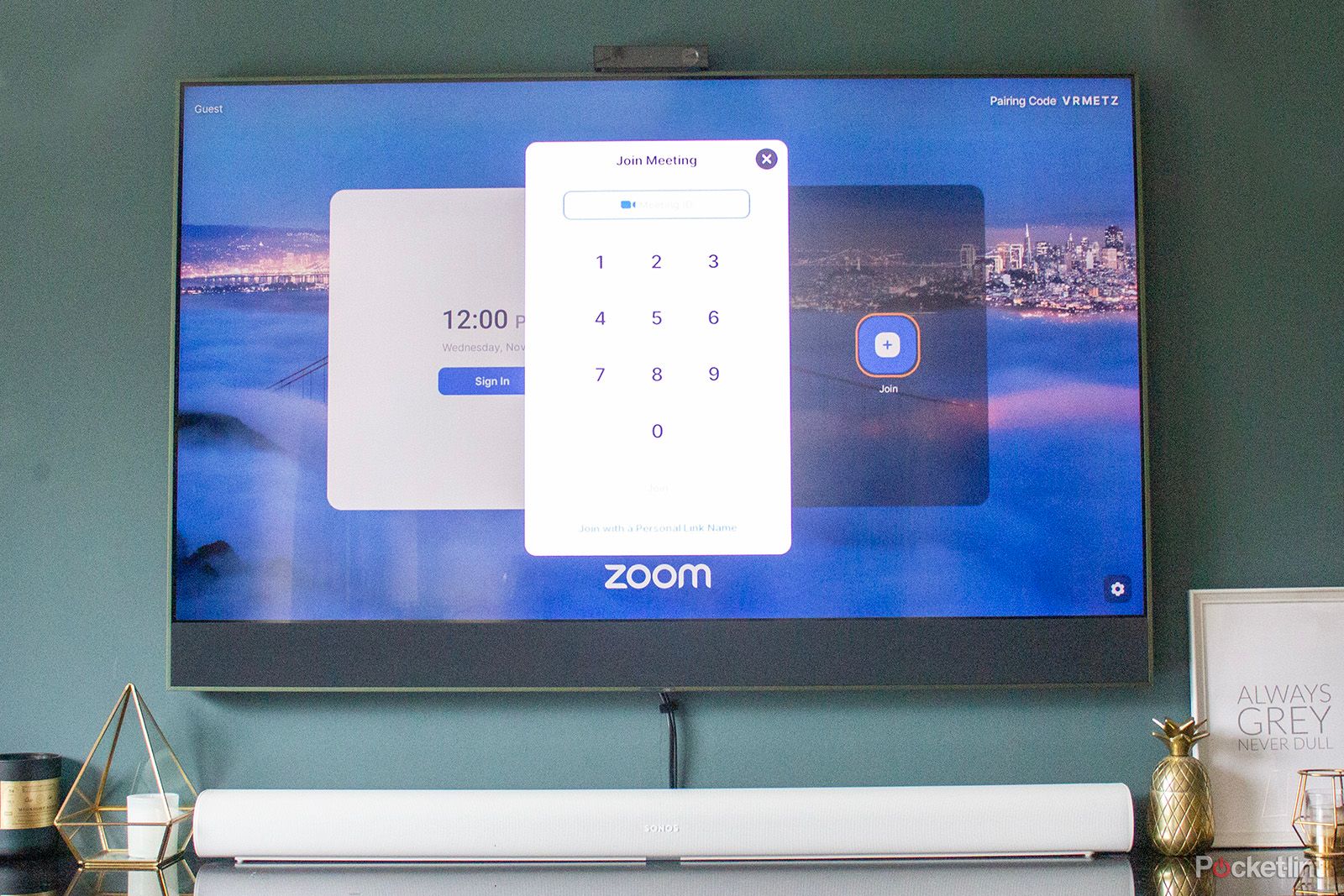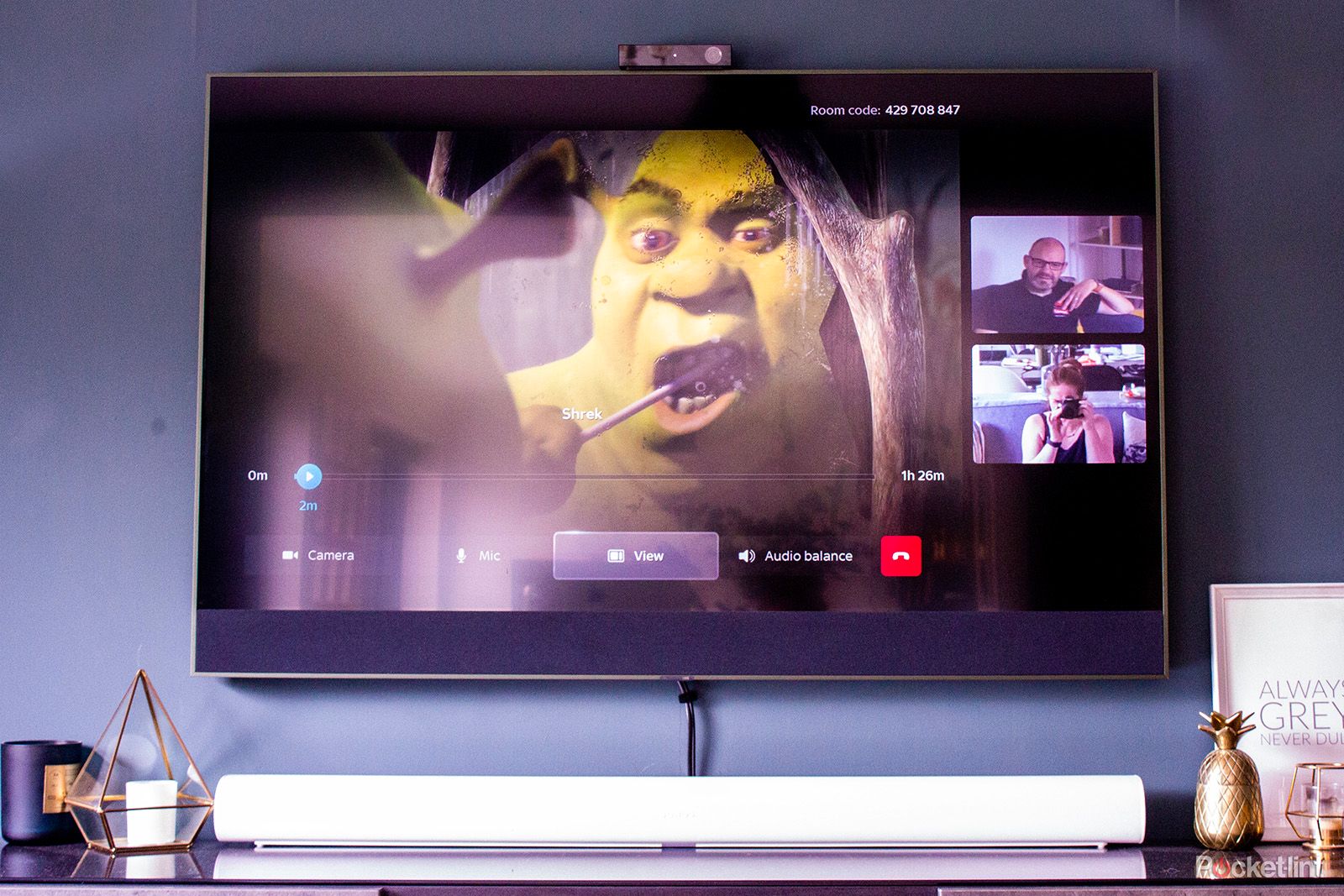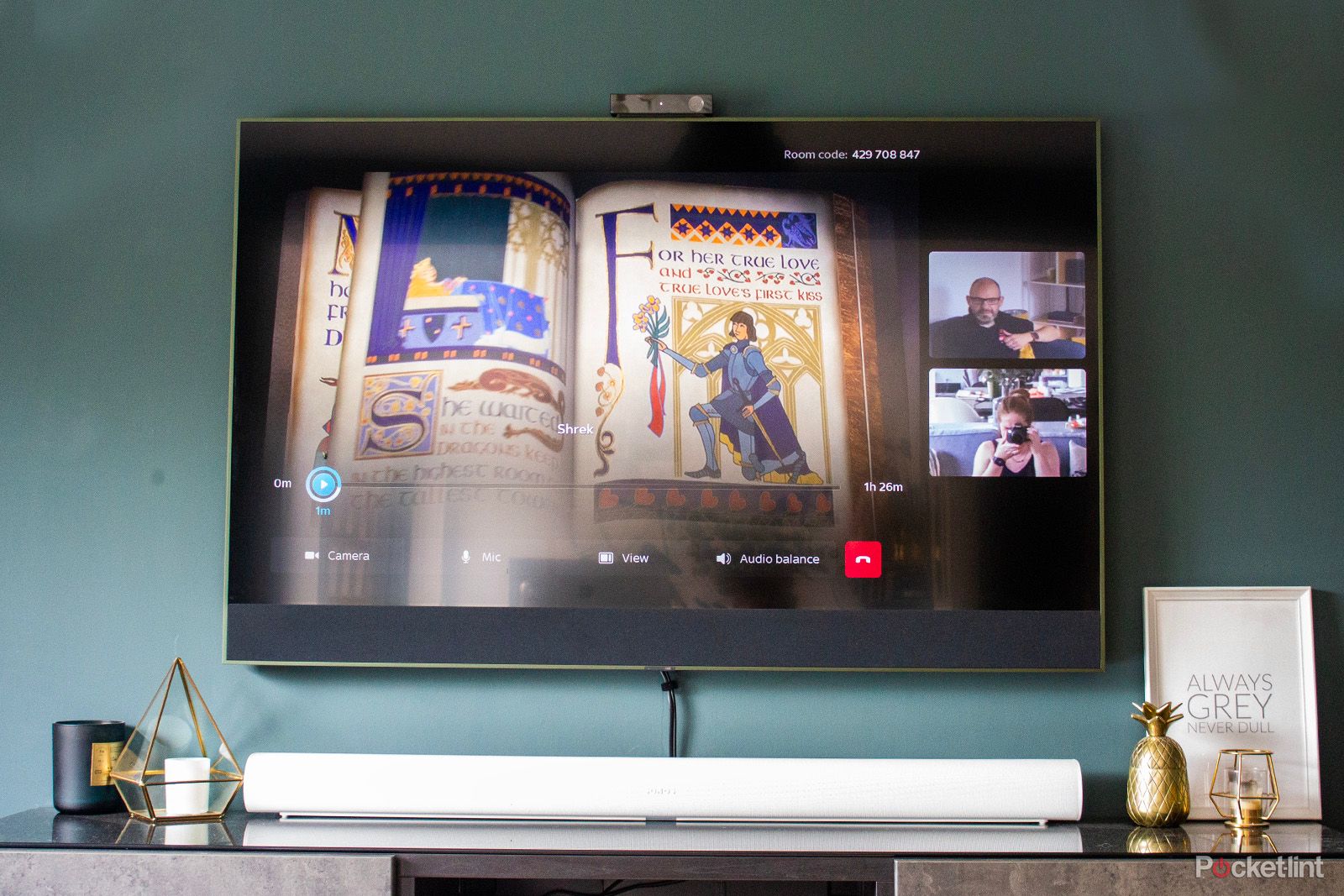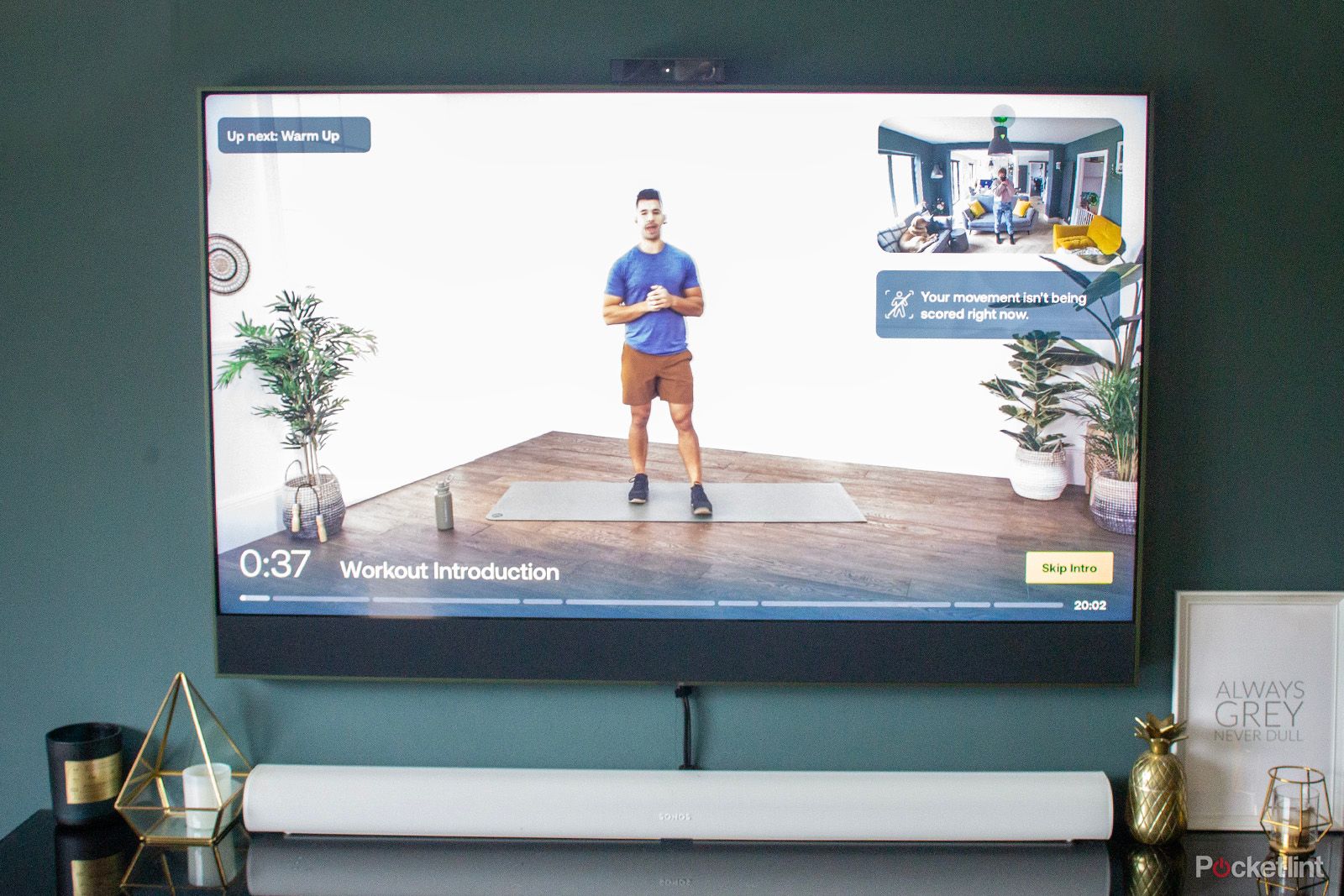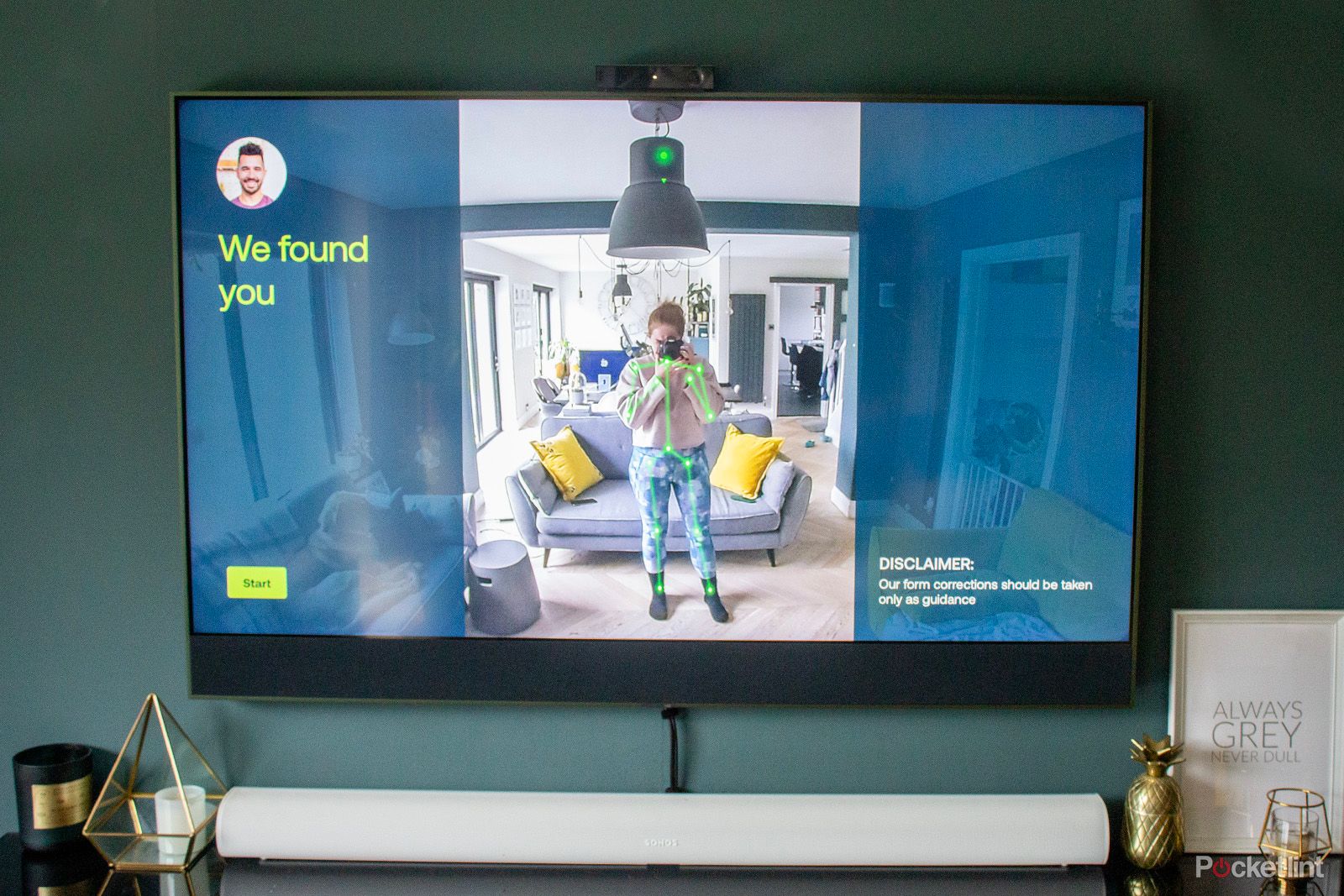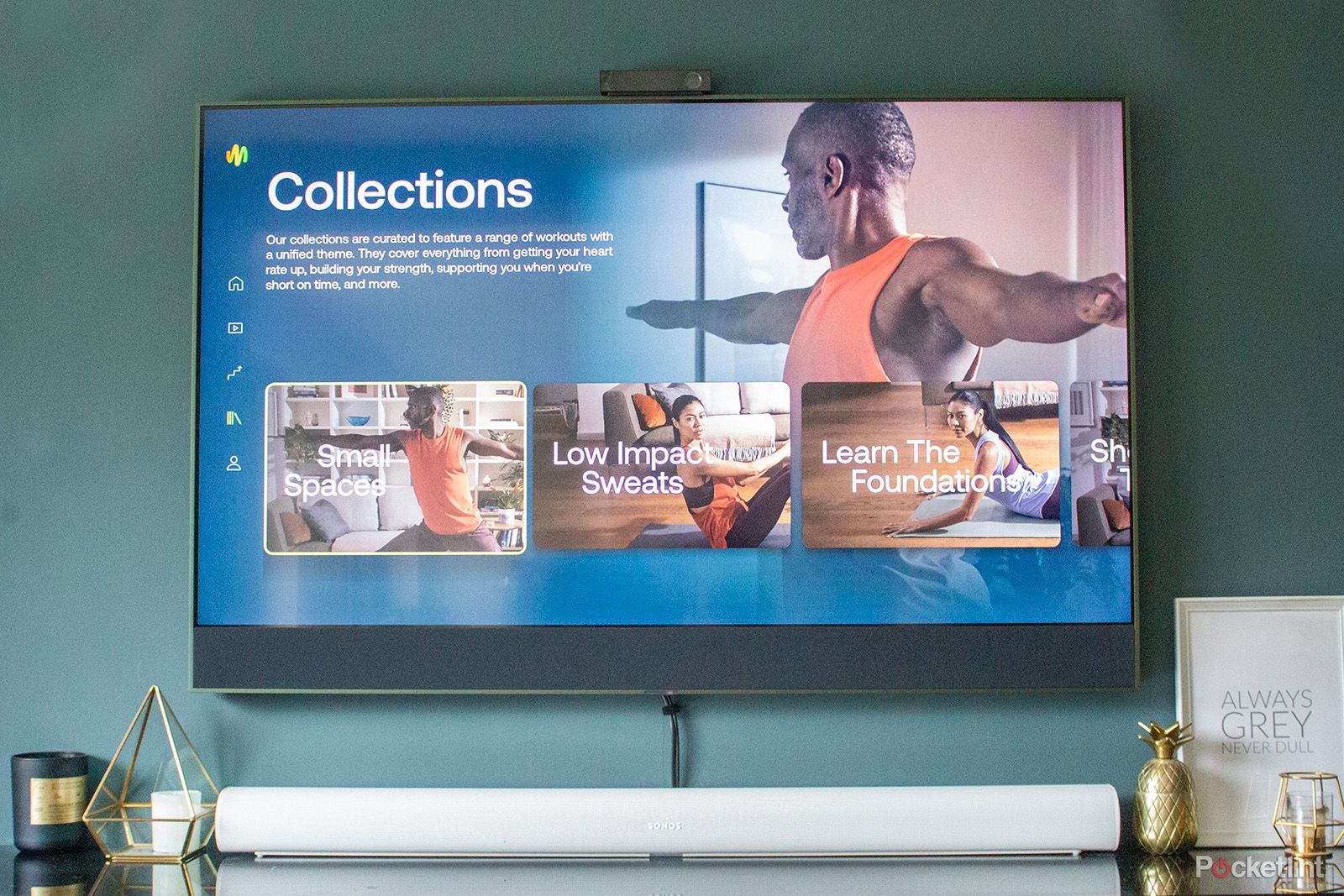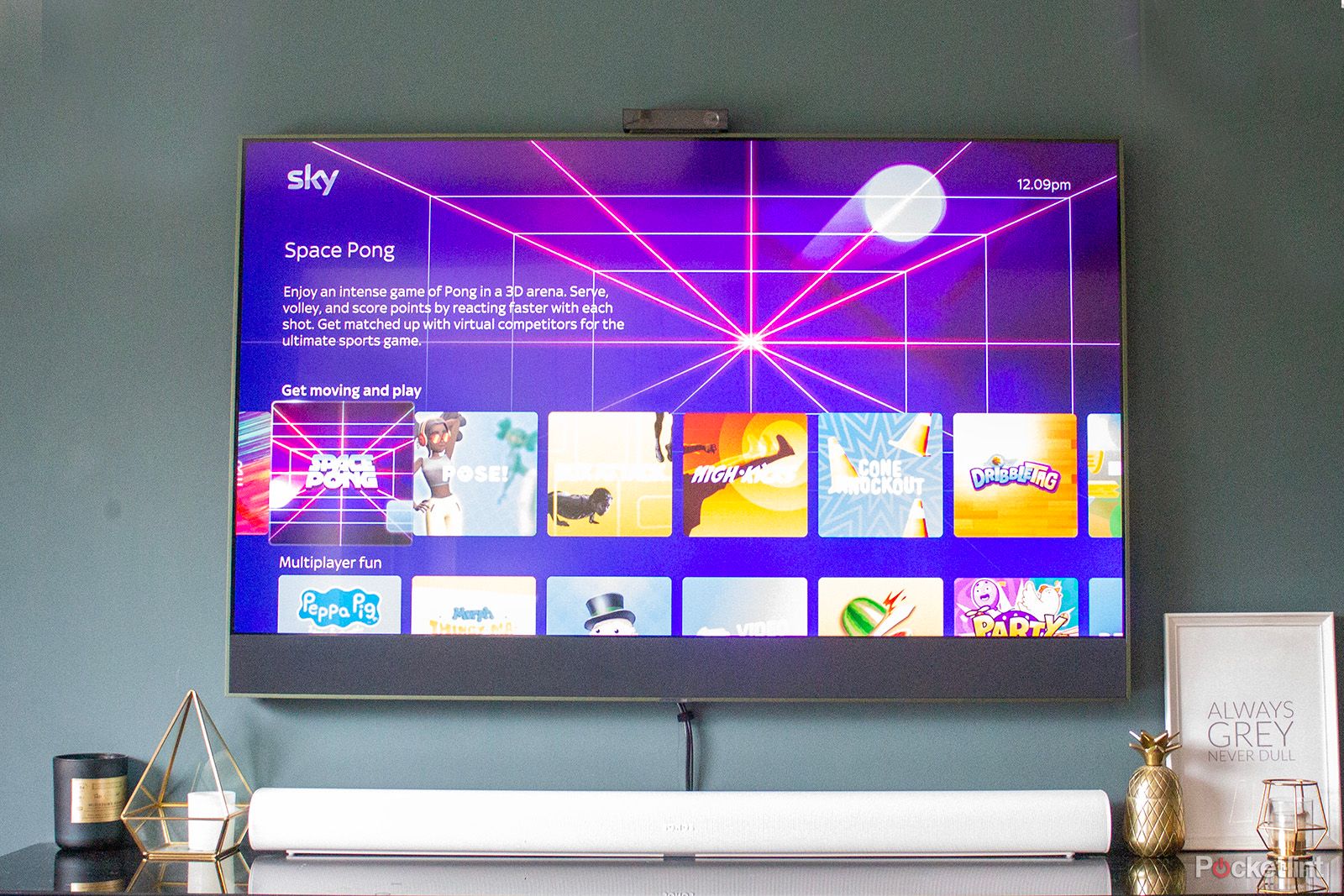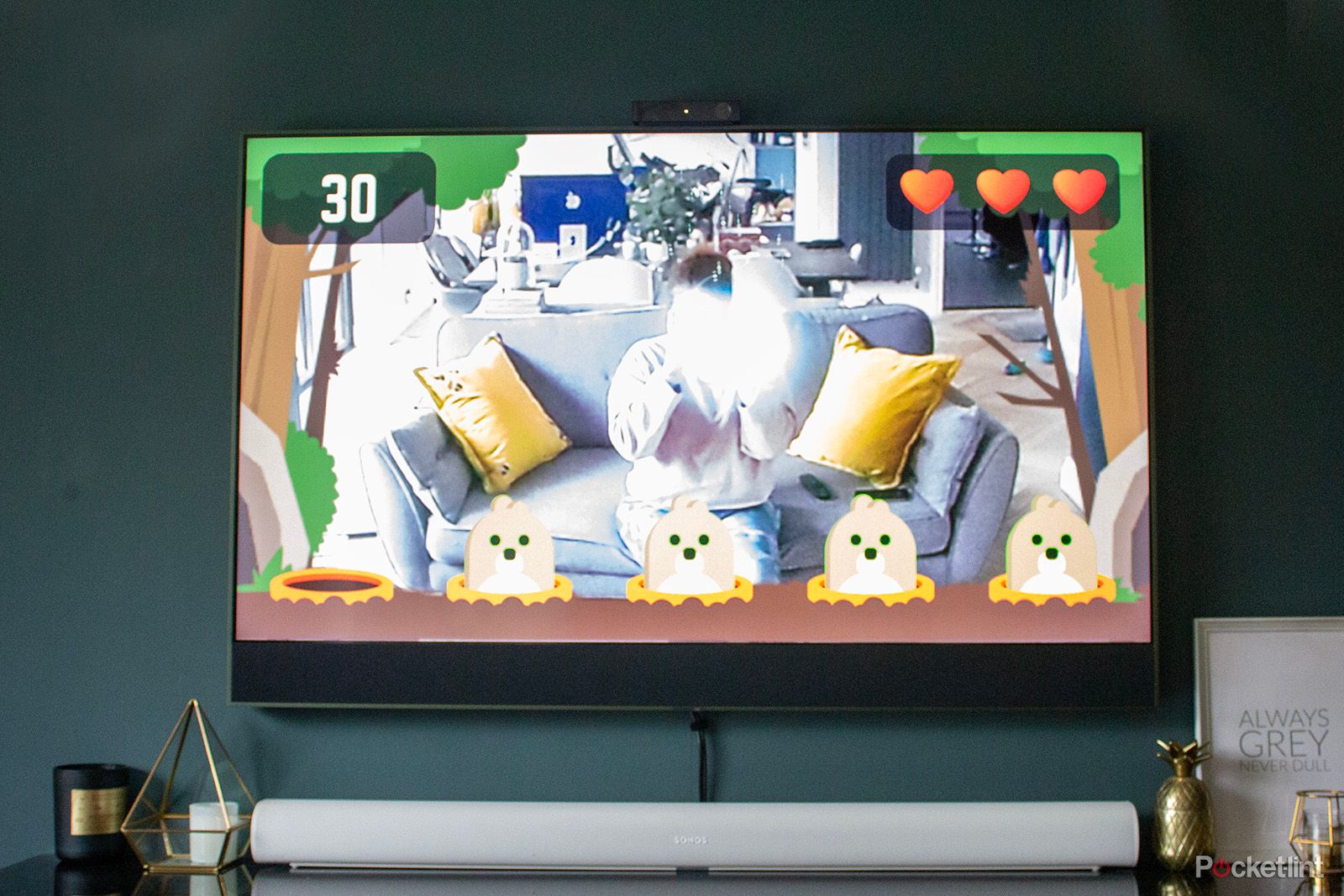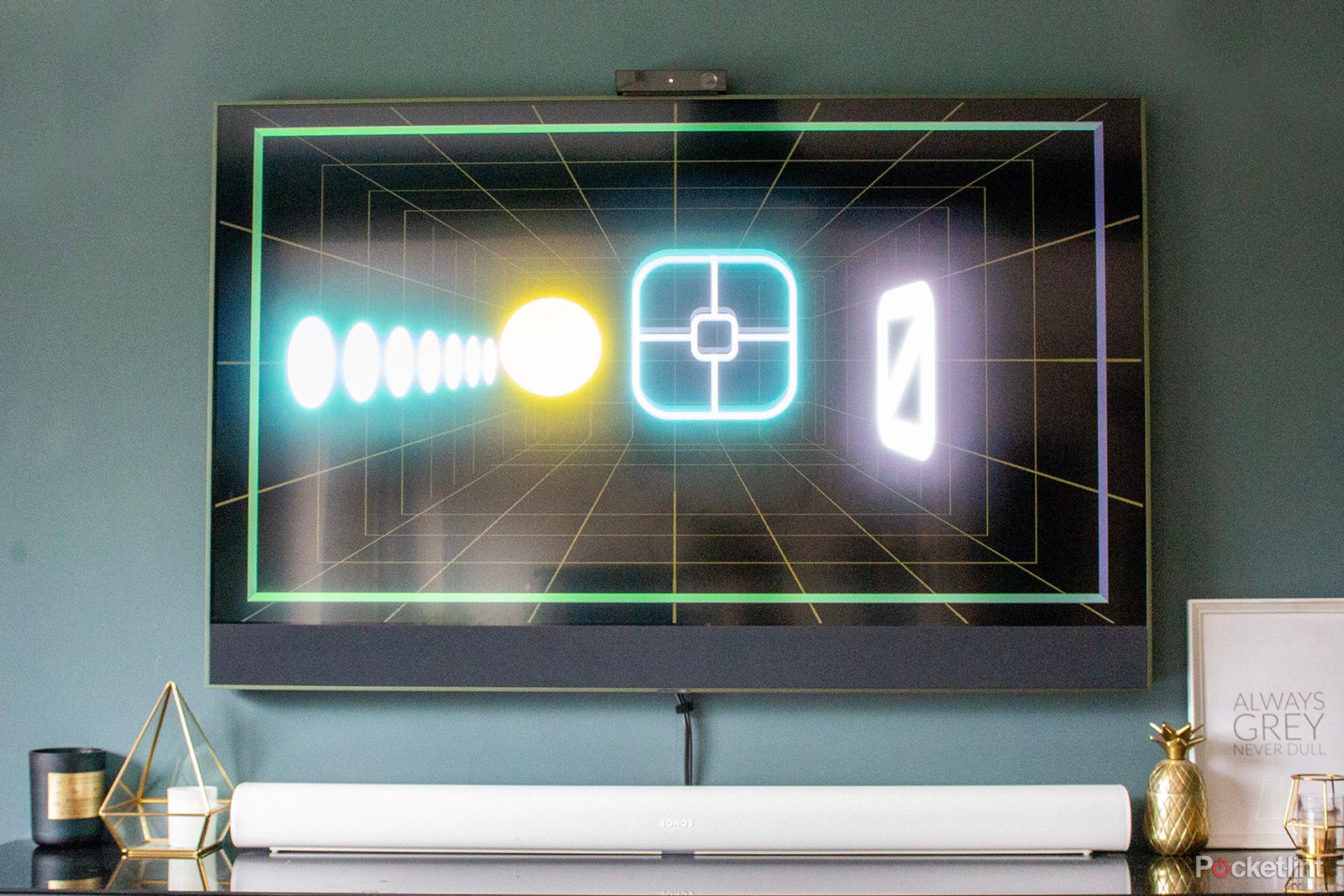Sky introduced a new product earlier this year, only it was a little different to the norm. The company already launched its Sky Protect home insurance offering in 2023 – which admittedly was also different to its usual announcements – but Sky Live is in a realm of its own. While there are some products out there that do some of what Sky Live does, there’s nothing really out there that does all of what it is capable of.
I wrote a separate in-depth feature on Sky Live detailing what it is and what it offers, but here I’m diving into my experience with it. Should you buy Sky Live to add to your Sky Glass? Here’s my review.
Sky / Pocket-lint
Sky Live
Sky Live isn’t just a different product for Sky, but it’s a pretty unique product full stop. There are devices out there that do some of what Sky Live offers – you can play games, workout, and video call on Apple TV too – but Sky Live has a few little extras that set it apart, like the real-time feedback in workouts. I love that everything is included in the Sky Live price, rather than experiences costing extra, and the features on offer are great overall. The biggest problem is that some of those experiences are restricted to other people having the same setup as you – in this case having Sky Glass and Sky Live too.
- Simple and discreet design
- Good features on offer
- Simple setup
- Not colour-matched to Sky Glass TV
- Restricted to Sky Glass customers
- Some lag with games
Simple and smart design
Sky Live is very simple in its design, which is a good thing. This is a device that is destined to sit on top of your Sky Glass TV so it’s not something you want to be too large, or over the top as that would draw too much attention to it. As a result, you get a small rectangular box weighing 130g that has a glass finish on just one edge – the front-facing one – while the rest is plastic. The camera lens is positioned to the far right – oddly it’s not in the centre – while the top of Sky Live has what look like screw holes, but are in fact microphones positioned in a pentagon format in the centre.
There’s also a privacy button on the top, positioned towards the top right, while the rear has a USB-C port in the centre, flanked by grilles either side. This port is required to connect the USB-C to HDMI cable linking up the Sky Glass and Sky Live devices. The bottom of Sky Live is a magnet, which is how it attaches to your Sky Glass TV and it does this effectively. No need to screw anything in or attach to your wall, which is definitely welcomed.
Elsewhere, there’s not a great deal else to say about the design of Sky Live, though I do wonder why it only comes in black as a colour option. With Sky Glass offered in a range of colours, I’d love to have seen the Sky Live device match. I’ve got a green Sky Glass TV in my living room, which matches my green walls. The black Sky Live does blend in to some degree as it matches the screen when it is off, but I would have loved a green Sky Live so everything was uniformed. Still, you get a small, simple and relatively inconspicuous device, which is great considering it’s designed to be permanently on display.
Once Sky Live is attached to your Sky Glass TV, there’s a tilt adjuster to help you get the right angle. If you have your Sky Glass mounted on the wall, like I do, it’s easy enough to pass the cable – of which there is only one needed as I mentioned – through the gap so setup is pretty simple.
What’s video calling like on Sky Live?
There are four main features of Sky Live, which comprise video calling, watching content with other Sky Live users, playing games and working out, and I’ve tried each one during my review period.
The video calling feature enables you to make Zoom calls to any device, whether that be a laptop, phone, tablet or another Sky Glass TV with the Sky Live connected camera. It essentially puts loved ones, friends or work colleagues on your TV, whilst simultaneously allowing you to chill on your sofa during a video call, rather than having to hold your phone or hunch over your laptop, so it’s a very natural approach.
It is very simple to use, tapping on the Video Call option on the Sky Glass interface to then join a call with the Zoom Meeting ID and passcode as you would on any other device. You can also log into your Zoom account to see upcoming calls or schedule a new one. There’s an Auto-Tracking feature on Sky Live that ensures everyone in the room is in the shot, whilst also following the person talking and making sure they are front and centre – similar to what Apple’s Centre Stage feature does.
You can also transfer between your Sky Glass TV and your phone, tablet or laptop if you’re signed into the same Zoom account across devices though, meaning you can go from a call in your living room to a call on the go if you need to. This was super simple too, so video calling on my TV is actually something I could really get on board with. The only issue is that I mainly use Google Meet rather than Zoom so I need a little more support from Sky Live for other apps in order to make video calling via my TV more of a reality. I do like the idea however, and it is executed well. Video calling via your TV also seems to be something of a trend this year too, given Apple also brought FaceTime video calls to Apple TV with tvOS 17. This uses an iPhone as a continuity camera rather than requiring a separate camera device like Sky Live, but the end result is the same with Zoom also coming to Apple TV.
What’s Watch Together like on Sky Live?
Watch Together is an interesting one. It does exactly what its name suggests – allows you to watch content together with friends and family. In practice, this was really great and I can see how it could be something you could really enjoy with the right people, as well as the right content. It’s a little like real-life Google Box in your living room.
You can watch any live Sky content or On Demand content with up to 12 Sky Live households, and four of those will take precedence on the right-hand side of your TV screen with the content on the left. The promoted households on the right change depending on who is speaking, and there are various settings that allow you to alter your view. For example, a View button lets you switch between focusing on what you are watching or your friends, and you can also press the Home button on your Sky Glass remote to go into a picture-in-picture mode, where your friends appear in the bottom right of your screen, overlaid on the top of the content you are watching.
You also have the ability to switch the audio settings, either choosing to have a combination of the content you are watching and the video streams, or choosing to focus on the content or the video streams. Like the video calling aspect, Watch Together is very simple to access, requiring a tap on the Watch Together icon, followed by picking a movie or show and creating a ‘room’. You then share the nine-digit session ID with your friends and they can join so you can all watch in real time.
The only problem with Watch Together is that it requires all your friends and family to have Sky Live in order to participate. The video calling element of Sky Live is a little more flexible as plenty of us have the Zoom app on at least one device, but it’s perhaps a lot more unlikely everyone you want to watch the Saturday football with, or Love Island final with, will have a Sky Glass TV, let alone with Sky Live too. I watched the cricket during my review period with another journalist who I knew had Sky Live and Sky Glass and we also watched some of Shrek. It’s fun and it worked brilliantly in my experience, but I have to say, I see the appeal far more when it comes to watching sport together than watching a movie. It takes a little bit of time to get used to and when it comes to watching a movie, it’s not something I would want to do if I hadn’t previously seen the film and wanted to hear every word. It’s a little rude to tell your friends to stop talking so you can watch after all, though you can of course reduce their voice compared to the content so there is that.
What’s working out like on Sky Live?
The working out element of Sky Live is perhaps the most exciting, certainly for me anyway. I pay monthly for a couple of fitness apps and I have also used services like Apple Fitness+ on my TV so I can also appreciate how convenient it is to be able to workout in your living room – providing you have the space of course.
Sky teamed up with a company called WithU to deliver a fitness app called Mvmnt exclusive to Sky Live, but rather than being just another fitness app with another monthly subscription, Mvmnt is included in the Sky Live price. It has over 130 workouts from a range of trainers, including Mr PMA, and crucially, it offers real-time feedback on your form. There’s built-in Body Tracking technology in Sky Live, which monitors 33 points of your body to offer three corrections for more than 230 exercises, from squats to planks. It will tell you if you need to squat deeper for example, or drive your knees out in line with your toes. There’s also a rep counter and you get a score out of 10 for the accuracy of your move.
It’s interesting to see the recommendations appear on the screen as you don’t perform various moves perfectly – who knew I was so bad at squatting. I always thought I had that move down. It’s something not even the very capable Peloton Guide – a connected camera design for strength training – offers so it’s something I think is excellent to see on Sky Live. There’s a good variety of workouts too, from HIIT to Yoga and mediation too, along with collections that group together workouts for small spaces or flats where you don’t want to make much noise or thump too much.
Sure, there were a couple of features missing, like the ability to connect to Apple Watch, Fitbit or Garmin to use them for a heart rate monitor in the Mvmnt app for example, but I was previously told that was part of the future roadmap, which will make Sky Live a very compelling fitness offering for sure.
What’s playing games like on Sky Live?
The final pillar of Sky Live is playing games, which is probably a little like marmite. You might love the idea of playing a family game or Monopoly with your family and friends or the idea of passing go consistently for several days or weeks on your TV might fill you with dread.
Either way, it’s part of the package with Sky Live and there will no doubt be someone in your home, or friendship circle who will appreciate the opportunity to play Fruit Ninja on your TV. There are a great range of games and experiences you can play on Sky Live from Monopoly as I mentioned, to Peppa Pig. I am not sure the latter is a good thing to be honest, but some children love Peppa so while it will be banned in my house, there are some parents out there who will be very grateful the developer Nex thought Peppa was a good thing to bring to the big screen in an interactive format.
Myself and my family have all played a number of games on Sky Live, from Fruit Ninja and Bunny Hop to Space Pong and Move it or Lose it. All uses Sky Live’s Motion Control technology, so only need your hands and arms to get slicing the fruit on Fruit Ninja for example, rather than any extra controllers. There was a slight lag with almost all games I played, though only slight and I’d be lying if I said the games weren’t fun and didn’t provide a decent level of entertainment for Sunday mornings. Bunny Hop works particularly well and my kids loved it, while Space Pong was a good game but the refresh rate wasn’t fast enough in my experience. Galaxy Jumpers was also too slow, while Move It Or Lose It was good but also a little slow. Some games you can play solo, while others can be two-player and there’s certainly a breadth of choice available.
Sky Live also has some experience options like VideoBooth where you create a video and you can apply a range of filters and then share where you like – sort of like Snapchat on the big screen – while Paw Patrol Pawsome Fitness lets kids (or you if you want) dance with Paw Patrol characters. Overall, playing games might or might not be the only reason to buy Sky Live, but it certainly completes an already compelling package.
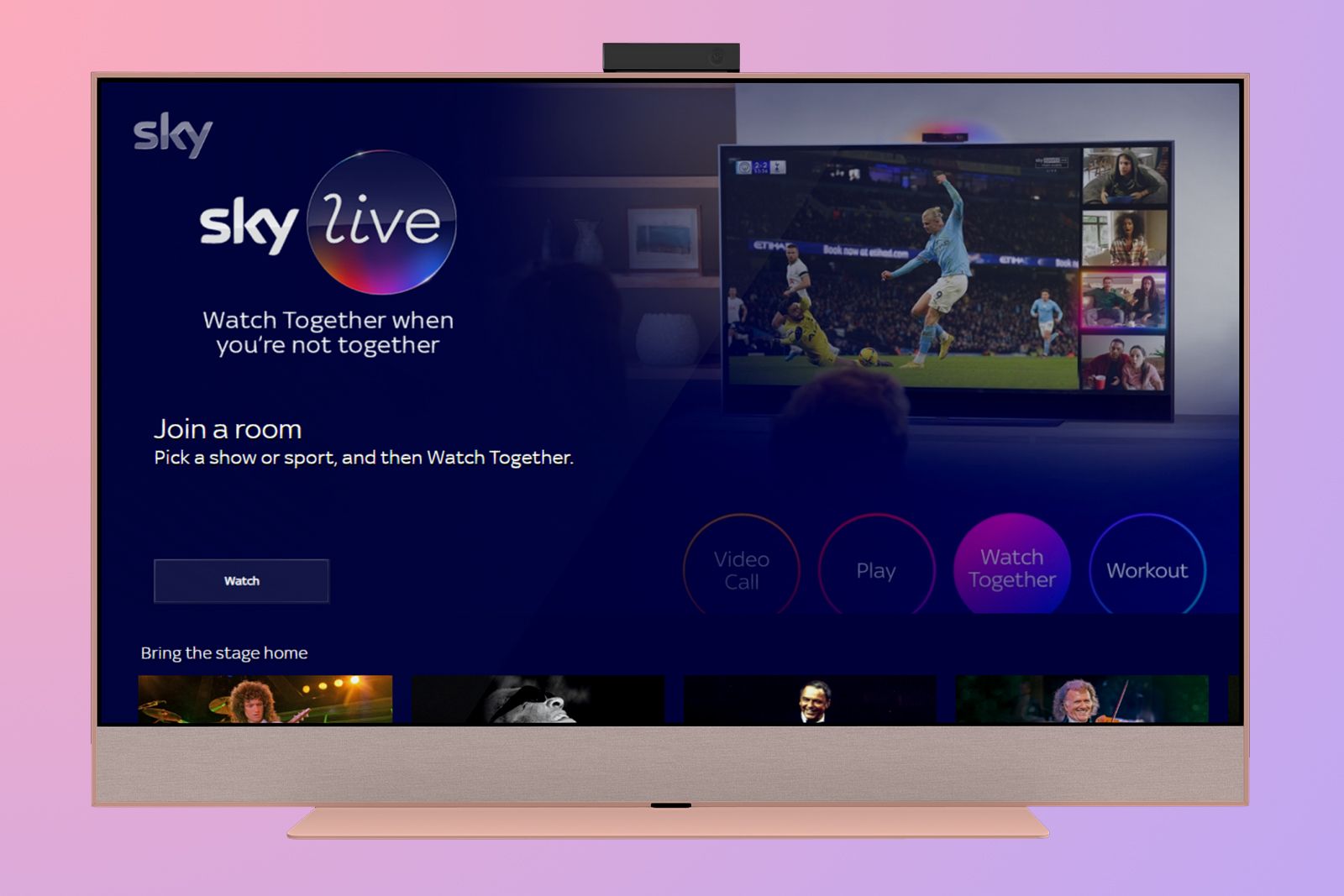
Sky / Pocket-lint
Verdict
Sky Live isn’t just a different product for Sky, but it’s a pretty unique product full stop. There are devices out there that do some of what Sky Live offers – you can play games, workout, and video call on Apple TV too – but Sky Live has a few little extras that set it apart, like the real-time feedback in workouts.
I love that everything is included in the Sky Live price, rather than experiences costing extra, and the features on offer are great overall. The biggest problem is that some of those experiences are restricted to other people having the same setup as you – in this case having Sky Glass and Sky Live too. Whilst the same could be said for FaceTime for example, a connected camera on top of a specific TV is arguably little more niche than owning either an iPhone, iPad or Mac and not even all three.
Sky Live does what it sets out to do – it enhances your TV experience – if you have Sky Glass at least, and as a family, we really enjoy it in our home. If you don’t have Sky Glass, it’s perhaps not a reason in itself to get it. Instead, I’d love to see Sky Live expand its compatibility with other TVs so other Sky customers like those who have Sky Stream can access all the great things it offers. For now, Sky Live has a good experience overall, it’s just a little too restricted.
Trending Products

Cooler Master MasterBox Q300L Micro-ATX Tower with Magnetic Design Dust Filter, Transparent Acrylic Side Panel, Adjustable I/O & Fully Ventilated Airflow, Black (MCB-Q300L-KANN-S00)

ASUS TUF Gaming GT301 ZAKU II Edition ATX mid-Tower Compact case with Tempered Glass Side Panel, Honeycomb Front Panel, 120mm Aura Addressable RGB Fan, Headphone Hanger,360mm Radiator, Gundam Edition

ASUS TUF Gaming GT501 Mid-Tower Computer Case for up to EATX Motherboards with USB 3.0 Front Panel Cases GT501/GRY/WITH Handle

be quiet! Pure Base 500DX ATX Mid Tower PC case | ARGB | 3 Pre-Installed Pure Wings 2 Fans | Tempered Glass Window | Black | BGW37

ASUS ROG Strix Helios GX601 White Edition RGB Mid-Tower Computer Case for ATX/EATX Motherboards with tempered glass, aluminum frame, GPU braces, 420mm radiator support and Aura Sync


